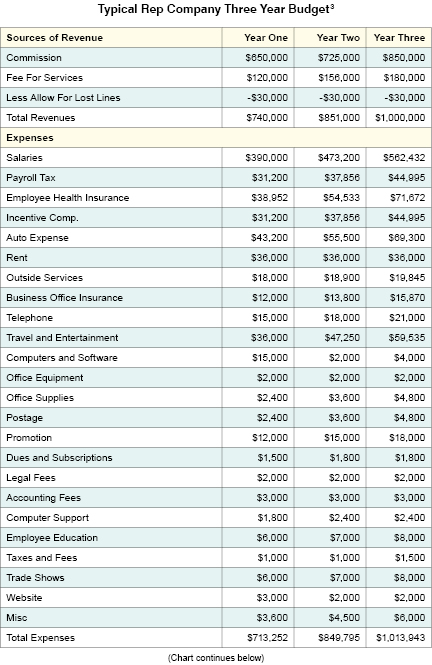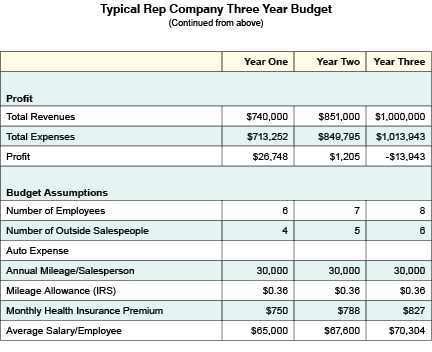This is the 21st in a number of articles serializing The Sales Force — Working With Reps by Charles Cohon, MANA’s president and CEO. The entire book may be found in the member area of MANA’s website.
The first agency Jim visited upon his arrival in the territory was a partnership of two men. Their company had a reputation for achieving solid sales growth, but Jim immediately noticed that their office was quite disorganized. Sales leads and trade publications were stacked all over the conference table, and the two had to push them to one side to make room for Jim to sit.
“So, tell us about your company, Jim,” started one of the partners. It was clear that they were aware that Troothe made flanges, but knew little more about the company. As Jim explained Troothe’s products’ uses and applications, the two men showed more and more interest in the subject. They mentioned specific OEMs they’d secured as customers and Jim saw potential in some of the opportunities they suggested. This group was not as impressive as Fred Richardson’s company, and Jim sensed that their obvious sales skills probably would be overshadowed by their lack of business skills.
“These are salesmen in business,” thought Jim, “not businessmen in sales.”1
The second rep company Jim saw was a one-man operation. Jim interviewed him in the office the rep kept in his home. It was clean and well-organized, but apparently not heavily used, because this rep traveled his territory four days a week and conducted most of his business with his cell phone and laptop computer. He was a bright, aggressive young salesman that Jim would have loved to hire as a sales trainee. With enthusiasm and energy that seemed more than enough to compensate for his lack of seasoning, this candidate had prepared for the interview with a thorough review of Troothe’s website and had asked a distributor friend for comments about Troothe’s position in the flange market. He hadn’t been a rep long enough to have as many contacts as the first company, but, unlike the first company, he didn’t balk at allowing Troothe to retain the two house accounts Joe Troothe wanted to exclude from the rep agreement. If it had been necessary for Jim to make his selection from the first two companies he visited, the second one would have gotten the nod.
The third rep company, Hannover Marketing, appeared to be every bit as professional as Fred Richardson’s group. It fielded four outside salespeople. The owner still handled a few accounts personally, and Hannover had several people on staff to handle customer service. William Carl, the owner, used a laptop, projector and PowerPoint to present his company to Jim. Jim was flattered to see that the presentation was not a generic “this is our company” piece — it was specific to Troothe, right down to including Troothe’s logo on the title page.
“You don’t need to take notes,” said William. “When we’re done I’ll give you a hard copy of the presentation.”
William’s four salespeople also sat in on the meeting. It was clear that the group had visited every page of Troothe’s website and had researched flange usage among Hannover’s customers. William pointedly asked about Troothe’s separate offerings in residential, commercial, industrial and hospital-grade flanges, and his salespeople casually dropped the names of local engineers the salespeople regularly visited to promote products from Hannover’s principals. Jim’s presentation about Troothe was professionally produced and impressive, but having seen William’s presentation, he wished he’d thought to add the name of William’s company to the title page.
With both the presentations and ensuing conversation completed, William said, “As long as this is your first experience with reps, I also have some material on the general topic of reps that I thought might be of interest to you. Do you have a little more free time today?” Jim nodded his assent. “Then let’s get these salespeople back on the street,” William continued, “and you and I can have that conversation on our own.”
As they left, Jim thanked each of the salespeople for their participation, which William noted with appreciation. “OK, William, I’m all yours.”
William cleared his throat. “I’m going to make a guess here, Jim, that when you started contacting reps and told them that Troothe was considering working with reps for the first time, not everyone you spoke with was enthusiastic about being the test case for your company.”
“You’re right about that, William. One of the reps was very specific that he didn’t want to be our guinea pig, but that he’d be willing to talk with us after we’d used reps for a while. Honestly, that was pretty much a turn-off to me — I don’t think I’d ever call that guy back again.”
“I can understand your frustration, Jim. At the same time, from a rep’s perspective, it’s pretty common that most of us in this industry have had a bad experience with a manufacturer who didn’t understand how to work with reps. Some got involved with reps half-heartedly, had misconceptions about how reps work or had unrealistic expectations about how quickly a rep could turn around a territory. I take a different perspective. You’re new to reps, so you don’t have any bad habits to break. I look at this as an opportunity for you and me to sit down with a clean sheet of paper, go over the most common problems that derail a manufacturer starting to use reps, and agree in advance how those issues will be handled. If we can be sure that we both understand each other and agree on goals and expectations, this can be a win-win-win2 situation.”
Jim looked puzzled. “Win-win-win?”
“Absolutely. I’m getting a little bit ahead of myself here, but if my rep company wins and Troothe wins, we’re only part way to our goal. The customer has to win, too. All three companies, mine, yours and the customer’s, are stakeholders in our relationship and there has to be something in it for everybody.”
“I see your point,” Jim said. “But you said you were getting ahead of yourself. Where did you plan to start?”
“The first thing I need to do,” William continued, “is to dispel the almost universal assumption on the part of manufacturers that I’m taking the commission check you send to my company and putting it in my pocket. Both of our companies are privately held, and I don’t think either of us is prepared to share detailed financial statements with the other. But I have a ‘typical’ rep company budget prepared by the Manufacturers’ Agents National Association that illustrates my point.”
William picked up a file folder that had been left in easy reach and took from it a sheet of paper titled, “Typical Rep Company Three-Year Budget.”
“We’re looking at the typical budget of a growing manufacturers’ rep company,” said William. “Admittedly, as with most small privately-held corporations, we try not to show too much profit, but as you can see, the profit ranges from three cents on each dollar of income to a negative number. Now, of course, I’m taking out a salary, but it’s not the kind of salary that makes anybody rich.”
“I see that, William, but aren’t you trying to increase your salary?”
“I want to make a decent living, sure, but just like the rep in this example from MANA, when my commission income goes up, a lot of it goes to budgeting for and then hiring additional salespeople. I’m focused on making my company grow, and much of a rep’s growth comes from having a high-powered sales organization that will attract large, important lines. This means that my own personal salary turns out to be a yo-yo. As I’m working toward adding a salesperson, I’m making more and saving it because when I add new salespeople, I have to ‘carry’ them for a while as they learn our lines and customers. As a small, privately held corporation, I can take the long-term perspective. My goal is to build a successful rep agency and be able to sell it to my employees at my retirement. So I’m not making a big salary — instead I’m investing in building the ultimate sales value my company will have 20 or 30 years from now. For that reason, my principals enjoy a high level of service as my continued investment in growing my company translates into continued improvement in the number and quality of the sales force I field on their behalf.”
Jim found the logic appealing. “I see what you’re saying — we’re getting the benefits of your company’s growing head count without paying the full price up front because you’re not living quarter to quarter as many public corporations do.”
“That’s it, absolutely,” said William. “There are a few points on this budget that probably merit closer attention. You’ll notice that the budgeted profits actually go down. That’s because this rep company is adding salespeople aggressively, in each case probably a little bit before they really could afford to, and most of the expenses of a rep company are directly proportional to the number of salespeople. If you look closely at this budget, you’ll see that salaries, payroll tax, employee health insurance, incentive compensation, auto expense, business insurance, telephone, travel and entertainment, office supplies, postage, promotion, employee education, taxes, trade shows and miscellaneous all go up pretty much directly in proportion to the number of salespeople. The only costs that are relatively stable are rent, outside services, office equipment, dues and subscriptions, legal fees, accounting fees and computer support, which are relatively small line items compared with the ones that go up in direct proportion to the number of salespeople. Oh, and of course, computers and software and website go down because the first year is the up-front costs and subsequent years are maintenance.”
“I’m starting to feel like I’m getting a good grasp of the rep business model,” Jim said, “and I appreciate your taking the time to explain all of this to me. It’s going to help me a lot when I have to go back to Joe Troothe and help him to get more ‘warm and fuzzy’ about reps.”
William didn’t let his disappointment show on his face. He’d hoped that Troothe’s owner had already bought into the concept of reps, but he kept that thought to himself.
To be continued next month.
MANA welcomes your comments on this article. Write to us at mana@manaonline.org.
1 Adopted from a December 1, 2000 letter on the topic of reps written by Helen Degli-Angeli, CPMR and former vice president, Manufacturers’ Agents National Association, to Gift & Decorative Accessories magazine “The professional sales representatives of today are not salesmen in business, but businessmen in sales.”
2 Laurence Kaufman, Fortune, November 8, 1999, p. S4.
3 Source: Joe Miller, Ex-President/CEO, MANA (Manufacturers’ Agents National Association) Effective Negotiating With Principals seminar, 2003.




